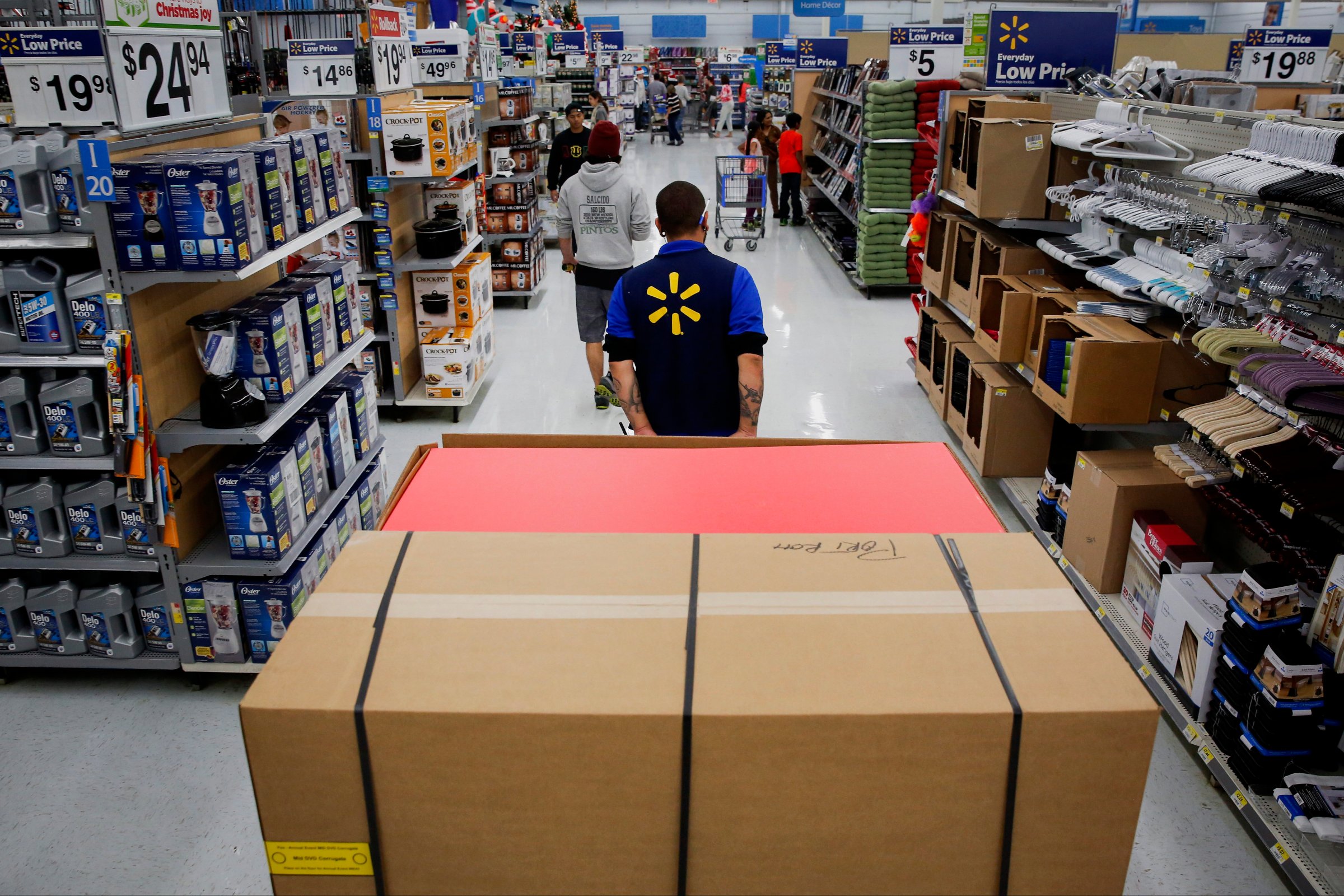
As gas prices hit multi-year lows a few months ago, many retailers hoped the savings consumers would enjoy would yield a bonanza.
Those hopes have been dashed.
Instead of going out to buy a new polo shirt or barbecue grill, consumers seem to be saving some of what they would have spent on gas to pay other bills.
Walmart, a unit of Wal-Mart Stores on Tuesday joined a chorus of U.S. retailers to report disappointing first quarter sales that has included Macy’s, Gap Inc and Kohl’s.
The retailer reported comparable sales, which includes digital revenue but excludes newly opened or closed stores, rose 1.1%- not bad, but below the 1.5% Wall Street was looking for. On the earnings side, Wal-Mart, which also owns Sam’s Club and Walmart stores abroad, reported a profit of $1.03 per share, down from $1.11 a year ago, and a penny lower than analysts anticipated.
So what happened? Consumers have shifted their budget to other priorities, the company said.
“We know that many of our U.S. customers are using their tax refunds and the extra money from lower gas prices to pay down debt or put it into savings,” Wal-Mart CEO Doug McMillon said on Tuesday.
“They’re also using these funds for everyday expenses like utilities and groceries. That’s where we can be their destination of choice.”
Indeed, some improvements on the grocery side were a silver lining for the company last quarter. Walmart gets 55% of revenue, or $155 billion last year, from grocery.
Walmart has made it a priority to improve its grocery business, both in terms of assortment, particularly fresh food, and making sure stores are amply stocked to avoid a chronic problem with empty shelves. (It is still grappling with a lot of food spoiling before it can be sold, something that was a drag on profit.) It has also raised its starting wage to increase employee motivation and improve customers service.
Encouragingly for the company, comparable sales at its Neighborhood Markets stores, smaller-sized grocery stores, comparable sales rose 7.9%. And Walmart saw more shoppers come into its stores for the second quarter in a row after nearly two years of declines.
Still, the world’s largest retailer recognized that there is a lot left for it to do to get back to its growth rates of the past. In addition to all its challenges at home, some of its foreign markets are struggling badly: Asda, its U.K. subsidiary, saw like-for-like sales excluding fuel fall 3.3% on the quarter, suggesting that it’s now taking most of the strain in a relentless battle for market share between established players and German-based discounters.
“We know, though, that we’re not where we want to be yet. It will take time to achieve our goals, but we’re fully committed to providing our customers with a shopping experience they can love, and associates who see their efforts leading to broader and better careers,” said Greg Foran, CEO of Walmart U.S., the company’s biggest division with annual sales of $288 billion last year.
More Must-Reads from TIME
- Inside Elon Musk’s War on Washington
- Meet the 2025 Women of the Year
- The Harsh Truth About Disability Inclusion
- Why Do More Young Adults Have Cancer?
- Colman Domingo Leads With Radical Love
- How to Get Better at Doing Things Alone
- Cecily Strong on Goober the Clown
- Column: The Rise of America’s Broligarchy
Contact us at letters@time.com